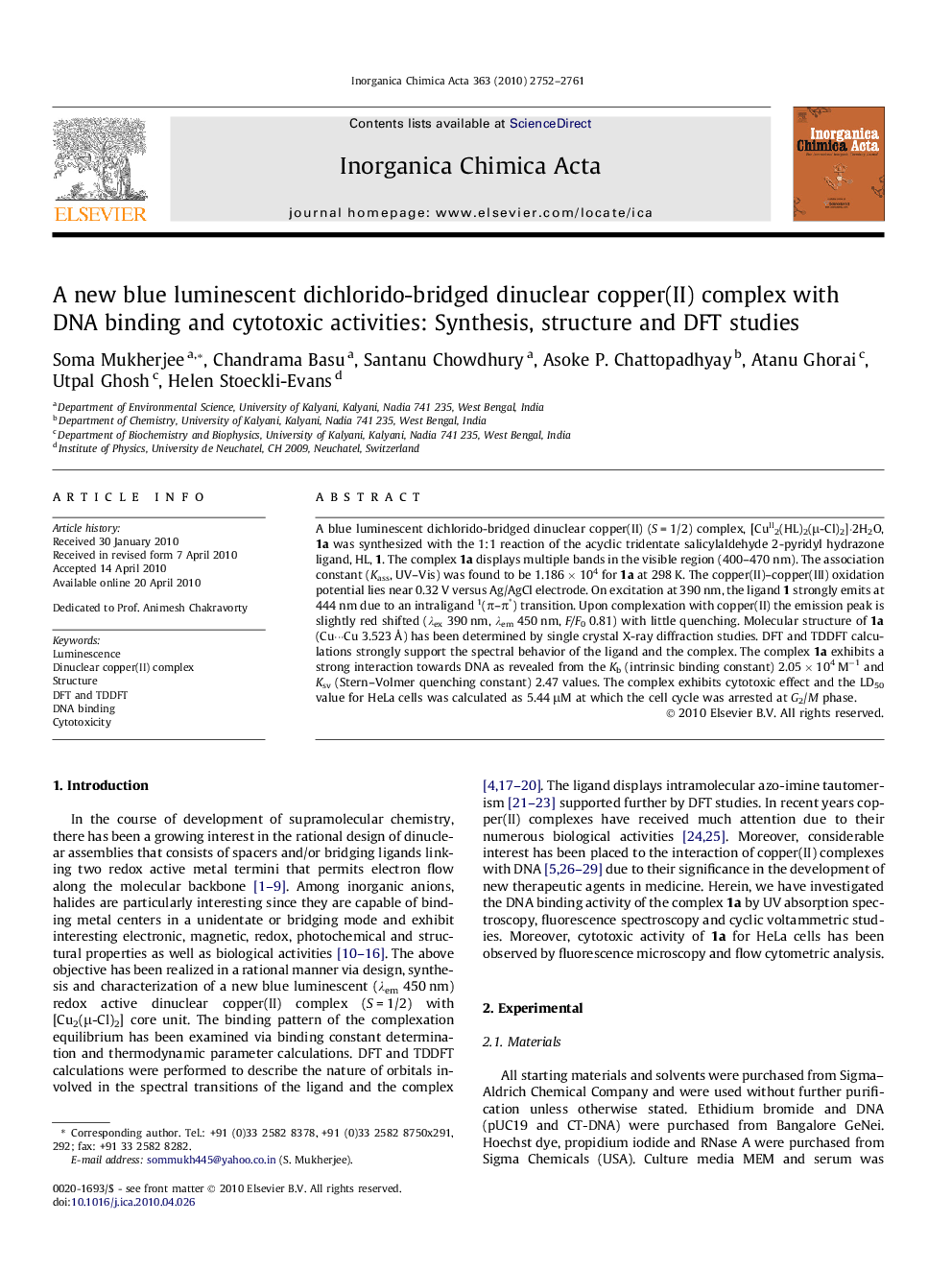| Article ID | Journal | Published Year | Pages | File Type |
|---|---|---|---|---|
| 1306883 | Inorganica Chimica Acta | 2010 | 10 Pages |
A blue luminescent dichlorido-bridged dinuclear copper(II) (S = 1/2) complex, [CuII2(HL)2(μ-Cl)2]·2H2O, 1a was synthesized with the 1:1 reaction of the acyclic tridentate salicylaldehyde 2-pyridyl hydrazone ligand, HL, 1. The complex 1a displays multiple bands in the visible region (400–470 nm). The association constant (Kass, UV–Vis) was found to be 1.186 × 104 for 1a at 298 K. The copper(II)–copper(III) oxidation potential lies near 0.32 V versus Ag/AgCl electrode. On excitation at 390 nm, the ligand 1 strongly emits at 444 nm due to an intraligand 1(π–π∗) transition. Upon complexation with copper(II) the emission peak is slightly red shifted (λex 390 nm, λem 450 nm, F/F0 0.81) with little quenching. Molecular structure of 1a (Cu···Cu 3.523 Å) has been determined by single crystal X-ray diffraction studies. DFT and TDDFT calculations strongly support the spectral behavior of the ligand and the complex. The complex 1a exhibits a strong interaction towards DNA as revealed from the Kb (intrinsic binding constant) 2.05 × 104 M−1 and Ksv (Stern–Volmer quenching constant) 2.47 values. The complex exhibits cytotoxic effect and the LD50 value for HeLa cells was calculated as 5.44 μM at which the cell cycle was arrested at G2/M phase.
Graphical abstractA blue luminescent dichlorido-bridged dinuclear copper(II) (S = 1/2) complex, [CuII2(HL)2(μ-Cl)2]·2H2O, 1a was synthesized with the 1:1 reaction of the acyclic tridentate salicylaldehyde 2-pyridyl hydrazone ligand, HL, 1. Molecular structure of 1a (Cu···Cu 3.523 Å) has been determined by single crystal X-ray diffraction studies. DFT and TDDFT calculations strongly support the spectral behavior of the ligand and the complex. The complex 1a exhibits DNA binding and cytotoxic activites.Figure optionsDownload full-size imageDownload as PowerPoint slide
